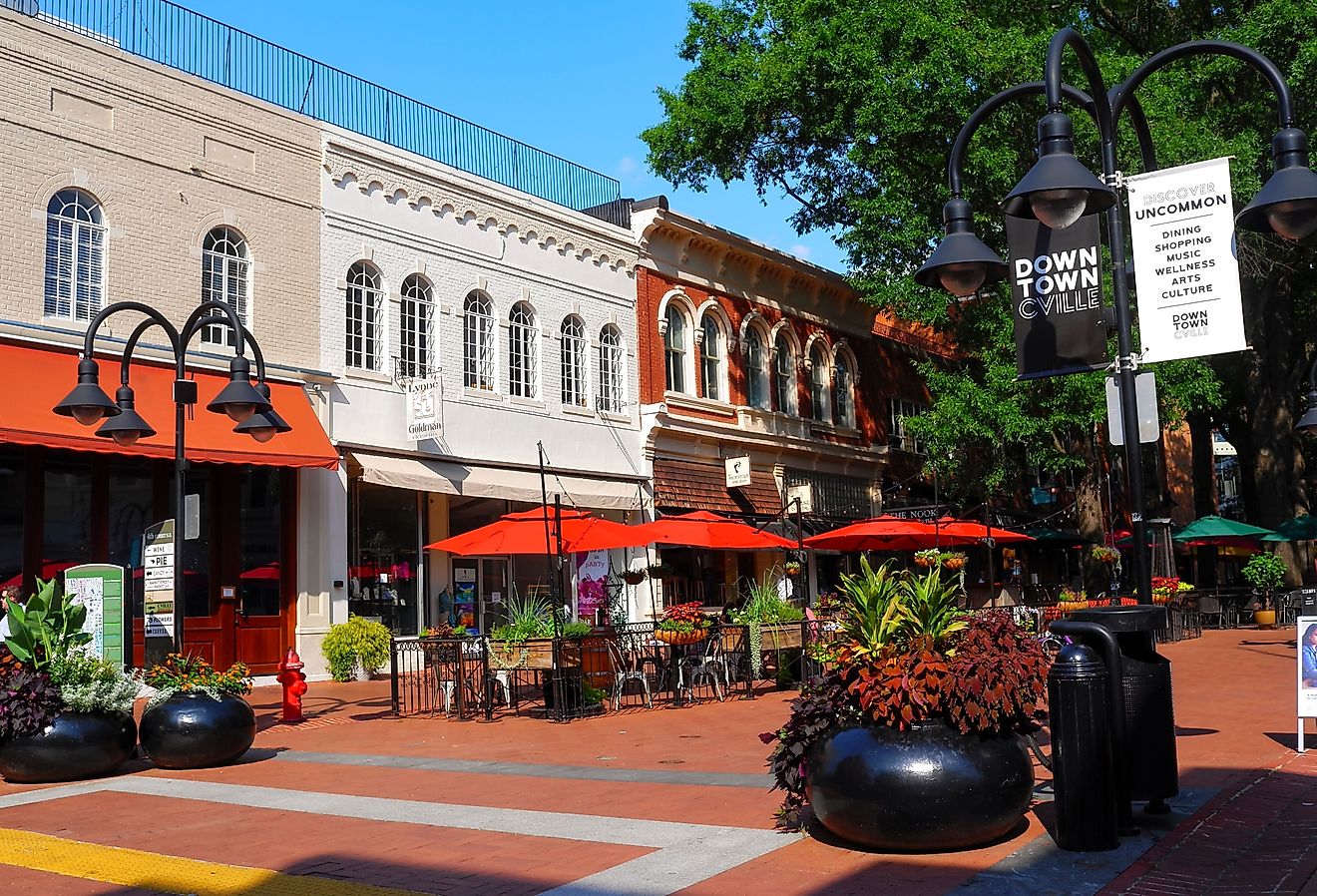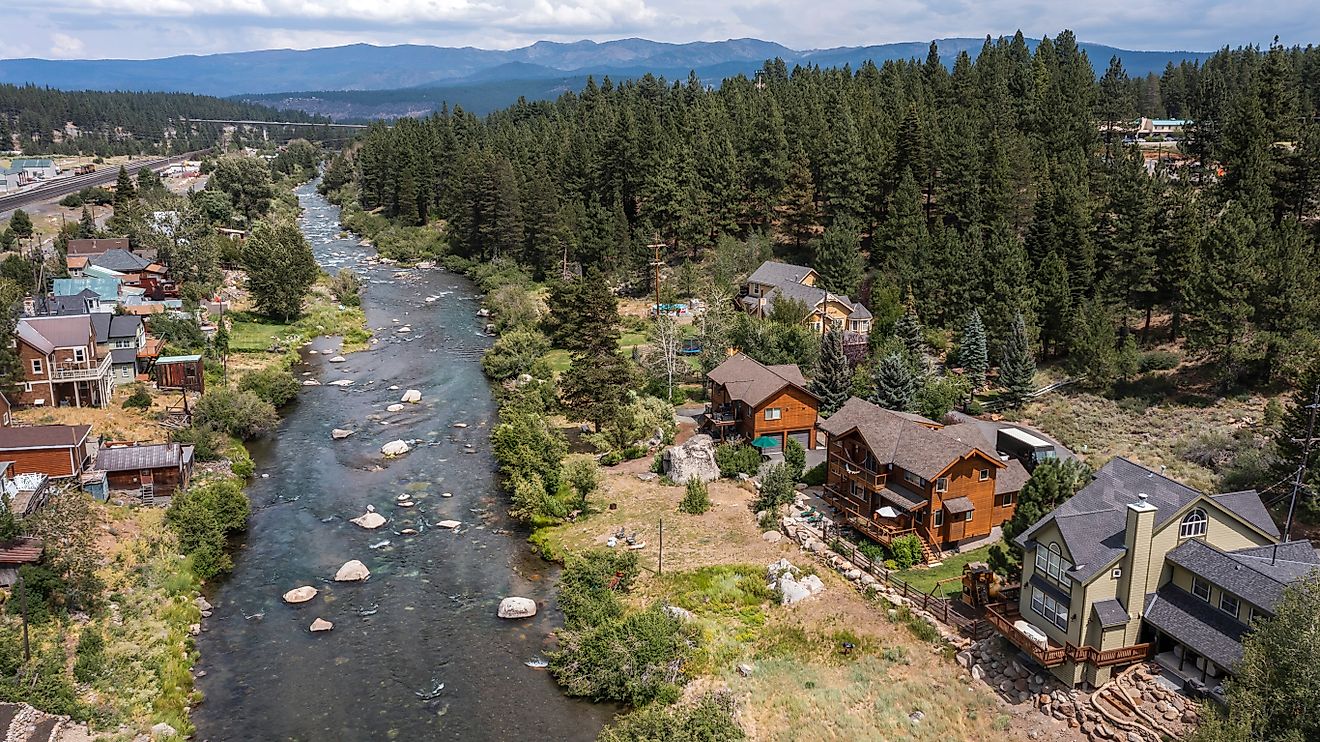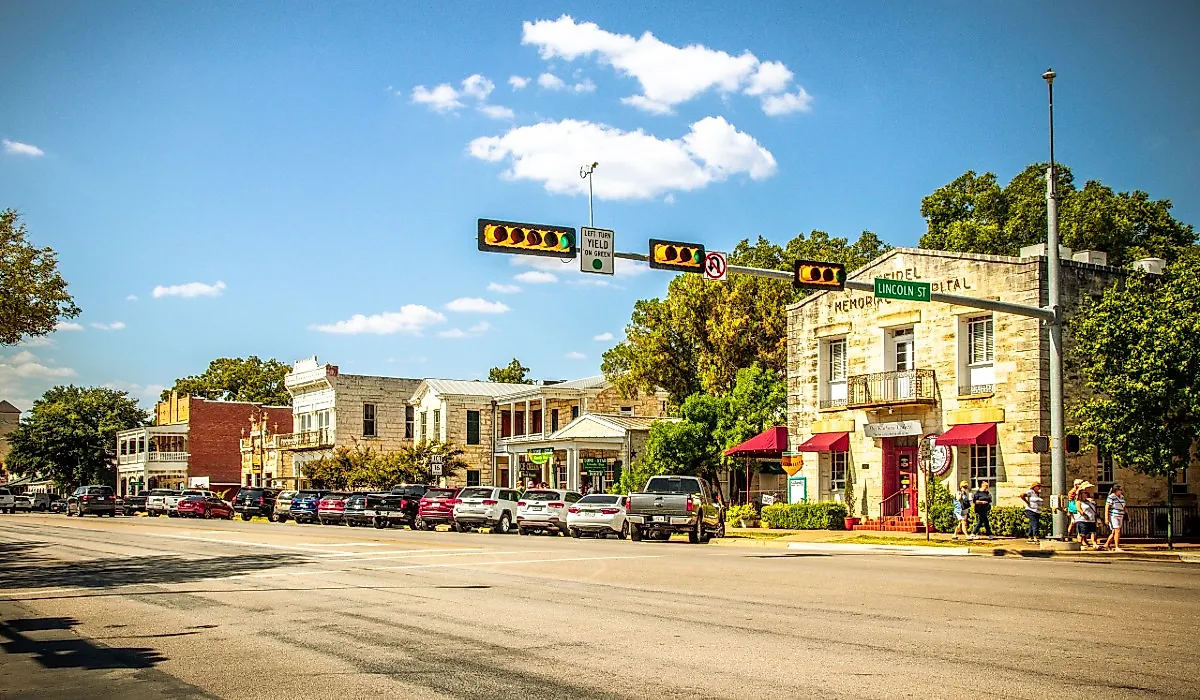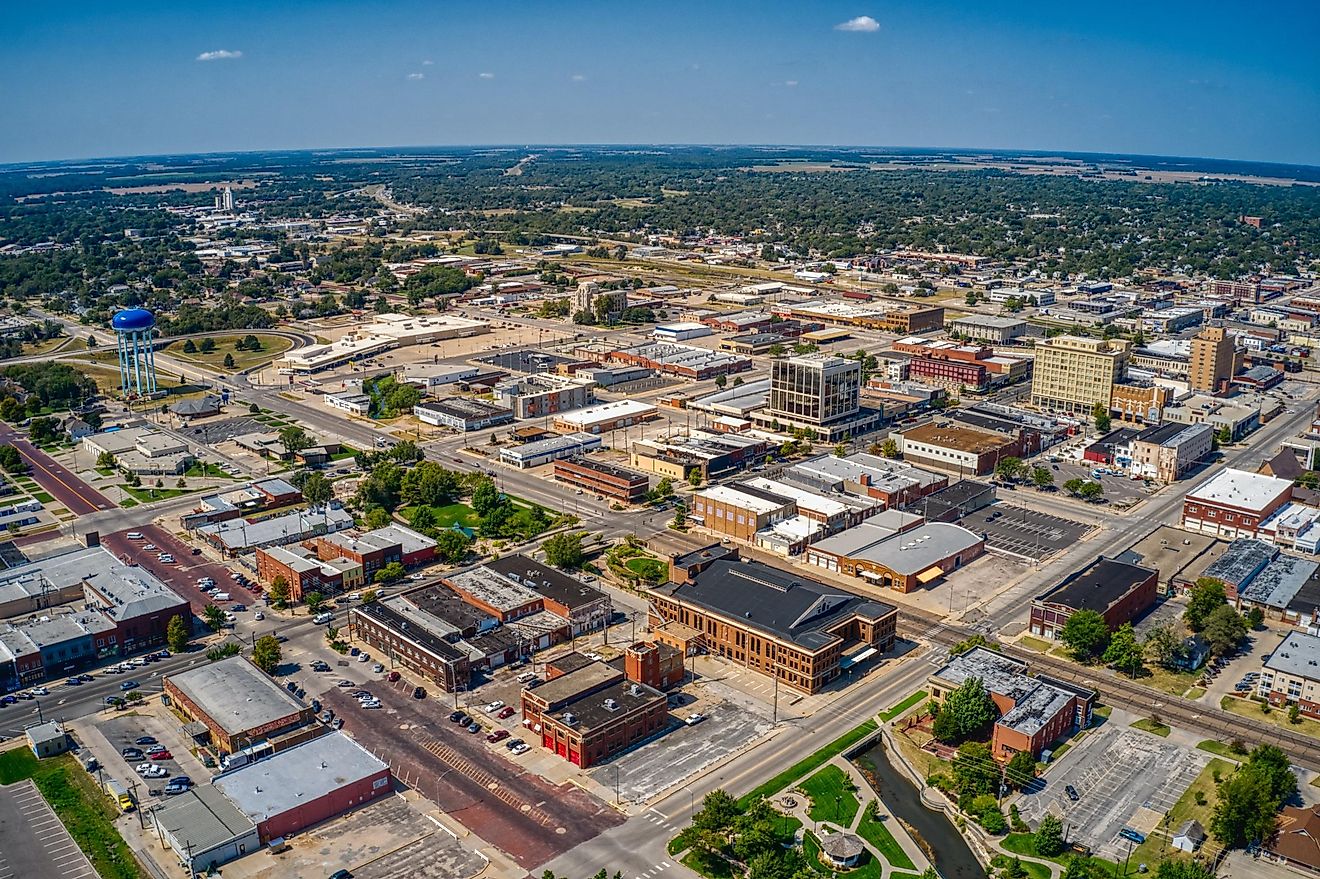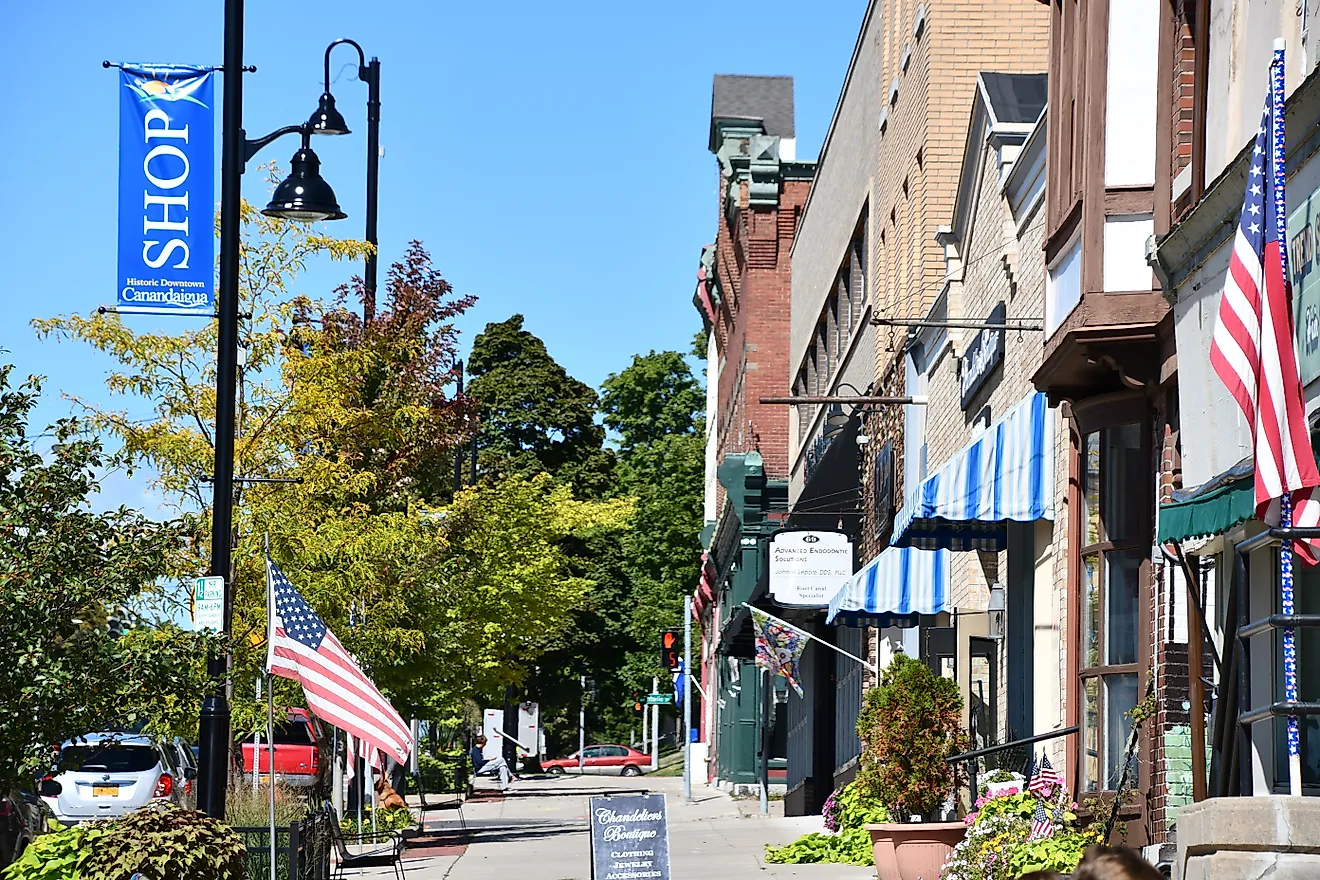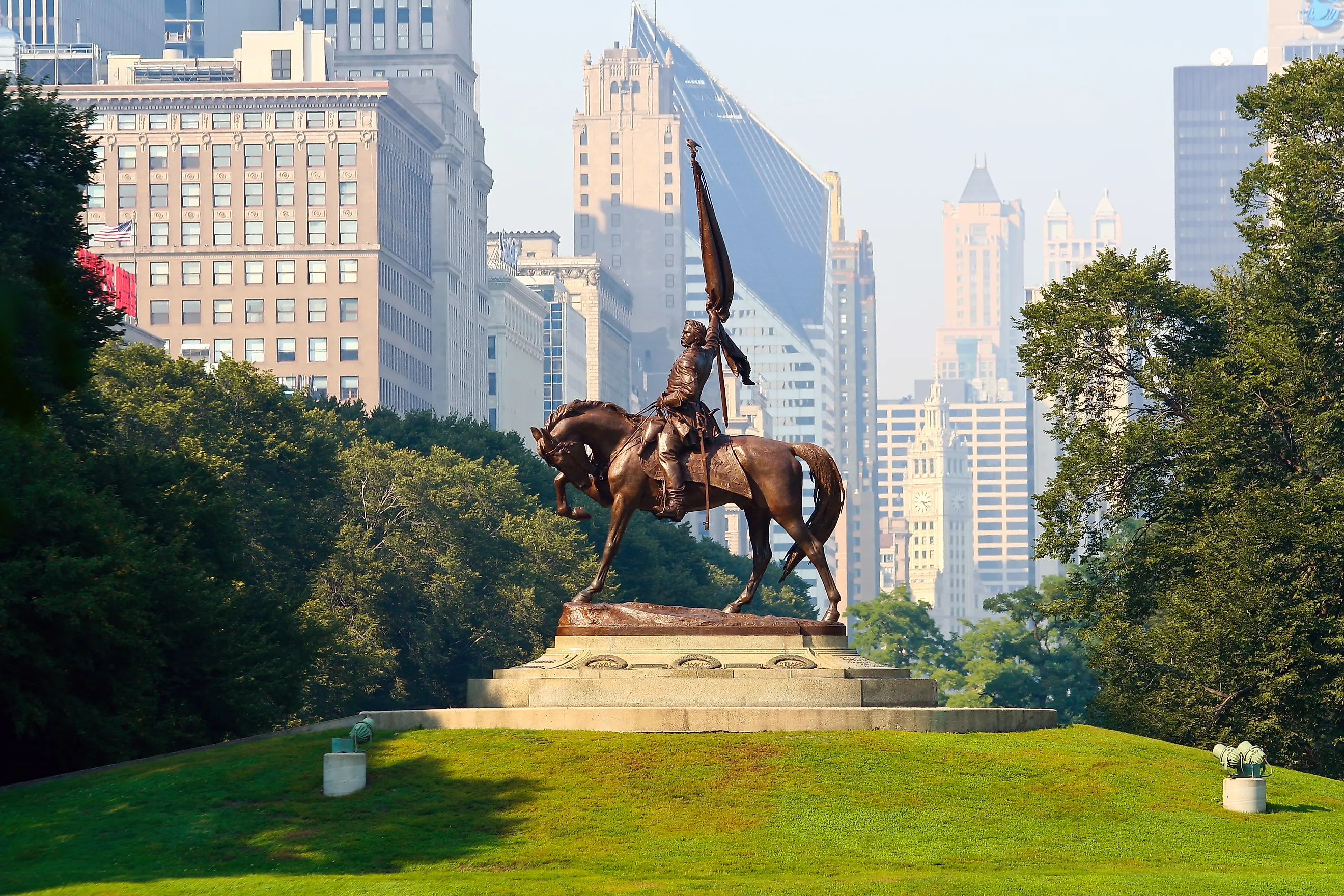
Top 10 Civil War Monuments In Illinois
One of the most brutal periods of American history is the Civil War. Fought between 1861 and 1865 following the secession of the Confederate States from the Union, the war drew in soldiers from throughout the country, from Texas in the south to New York in the north. Illinois stands as one of the states that contributed to the cause of the Union. It is the state that Abraham Lincoln represented as a U.S. representative and a place from which many were called to serve. It should be no surprise, then, that memorials, both large and small, can be found throughout the state.
Lincoln the Orator (Oak Woods Cemetery)
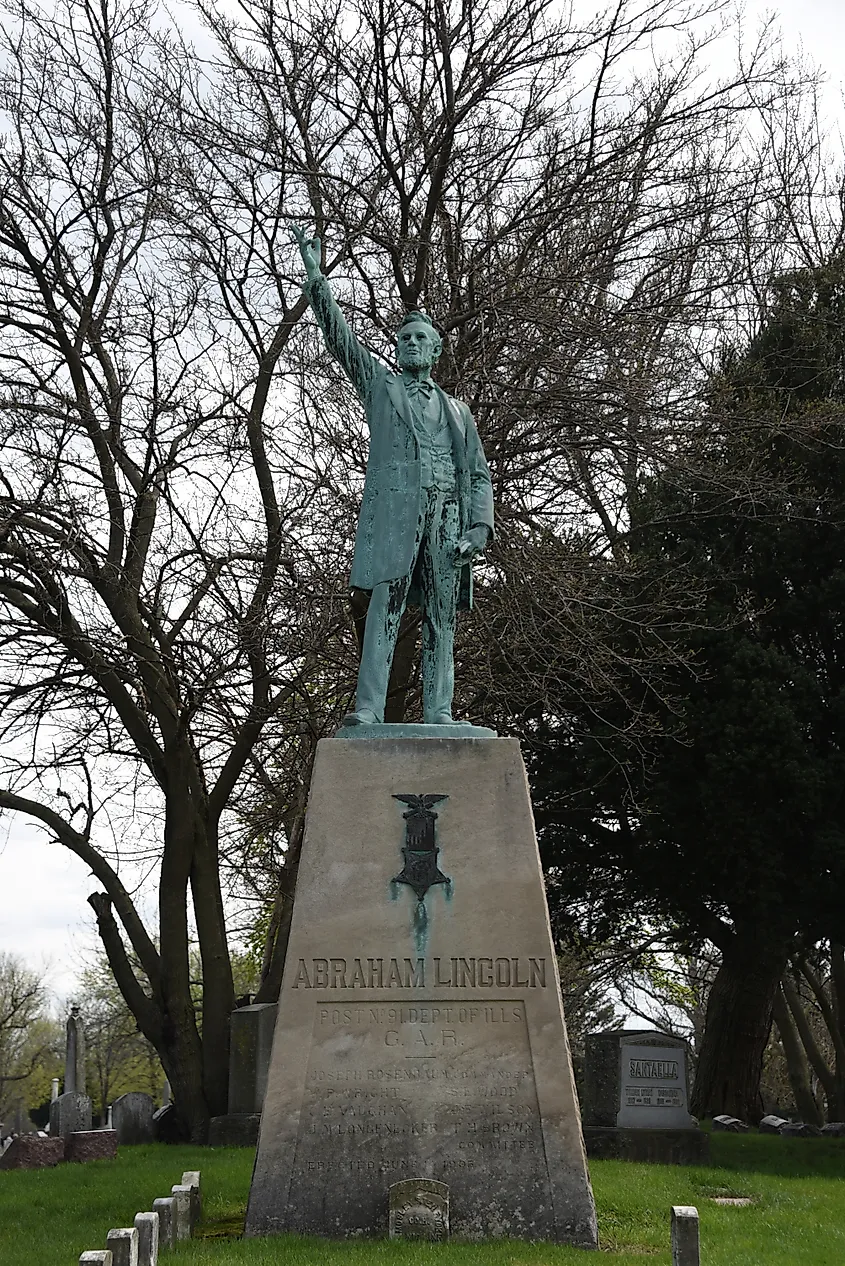
Oak Woods is a unique location not only in Chicago but throughout the United States. It is the single largest mass grave of Confederate Soldiers in the country, yet it is also the final resting place of many Union Army soldiers. A prominent location in Oak Woods is a tribute to the legendary figure of Abraham Lincoln, the man who guided the country through the Civil War and who was known for his famous speeches, such as the Gettysburg Address. Lincoln the Orator is a monument to the former president’s oratorial gifts and portrays him mid-speech at Gettysburg. While the most prominent feature here is the figure of Lincoln, this tribute honors the graves of the Union soldiers who served the country during this time of crisis. First constructed in 1905, Lincoln the Orator continues to stand today as a tribute to not only the man who led the country through the war but also the many soldiers who gave their lives in service to that country.
The Confederate Mound of 1895 (Oak Woods Cemetery)
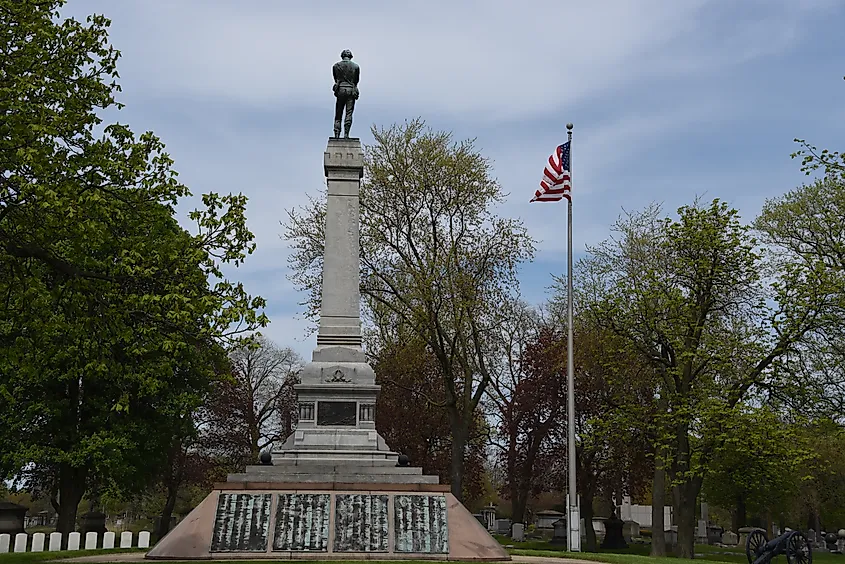
A second destination within Chicago’s Oak Woods is the Confederate Mound of 1895. The Civil War was a tragic event that saw the deaths of many to achieve the noble goal of destroying the institution of slavery in the United States. Still, this memorial is notable for the many it stands in tribute to, as more than 4,000 Confederate soldiers died while being kept at Camp Douglas, a Union-run military prison in the city. An important part of history, Camp Douglas was a large military prison that housed thousands, and many died due to disease and poor conditions. It is a notable historic site and recalls an important moment in the long history of the Civil War.
General John Logan Monument
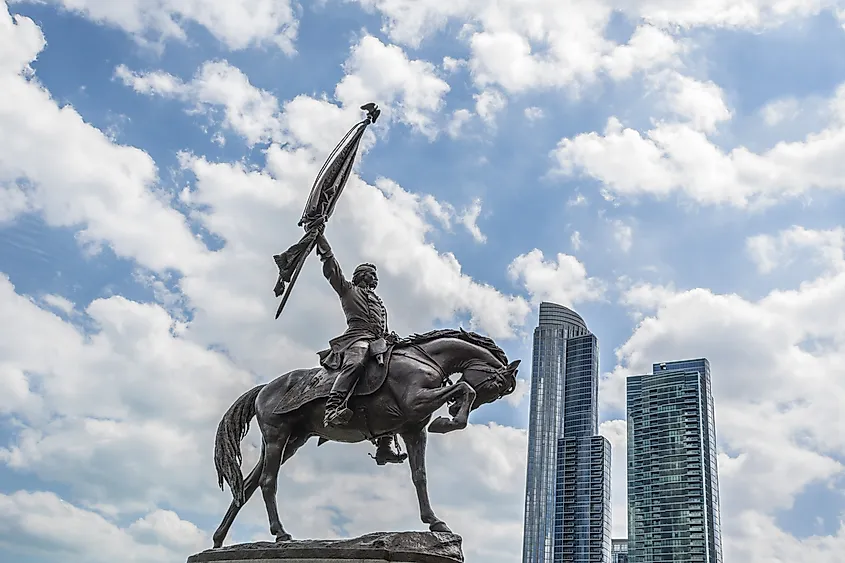
General John Logan had a storied history. He first served as a Democratic congressman, a role he filled until the outbreak of the Civil War. During his time as a congressman, he decided to transition to a military role. Retiring as a congressman, he became a volunteer in the U.S. Army and served at the First Battle of Manassas. He was honored with the rank of colonel, a role he filled until he was promoted to commander. Today, one of the most well-known statues in the city stands as a tribute to his service. First erected in 1897 and designed by Augustus Saint-Gaudens and Alexander Phimister Proctor, the statue continues to look upon visitors passing through Grant Park, located along the banks of Lake Michigan.
Stephen A. Douglas Tomb
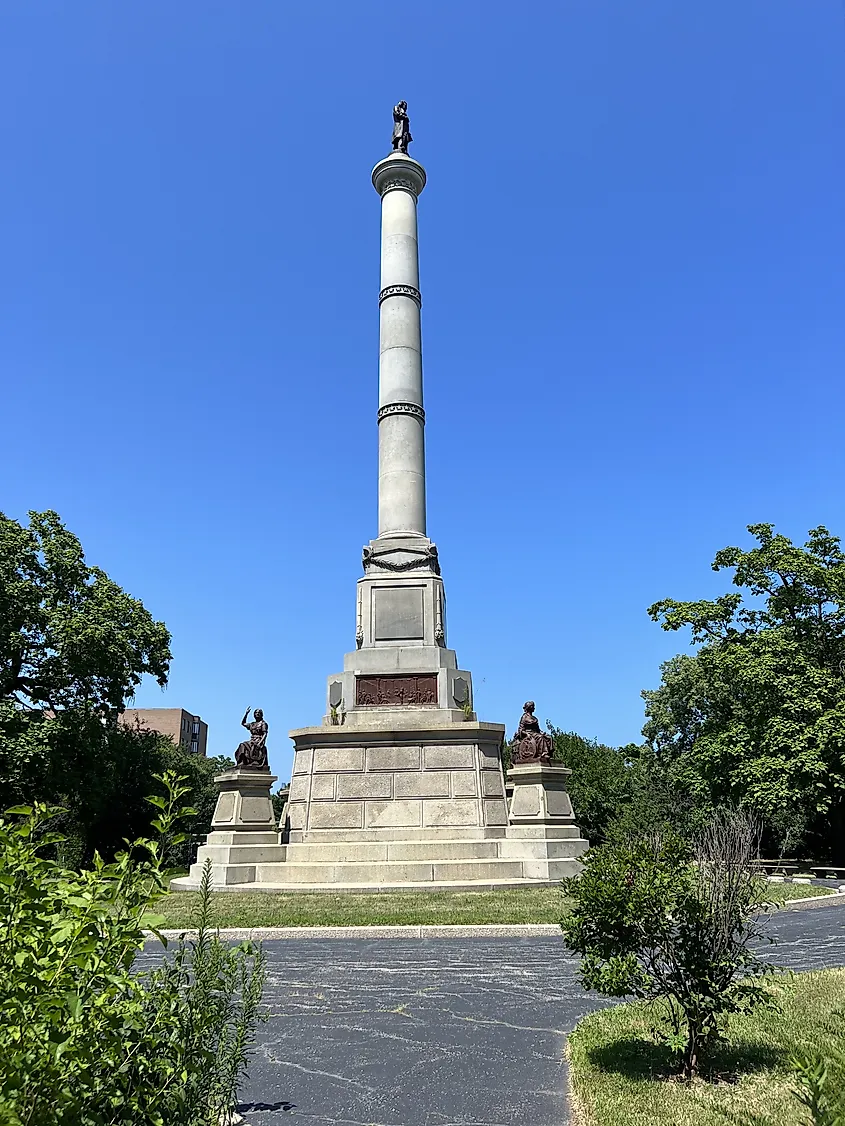
One of Abraham Lincoln’s greatest rivals and a man who fought to preserve a unified United States, Stephen Arnold Douglas was a long-serving politician who contended against Lincoln to become president of the United States. He previously defeated Lincoln in a run for the Senate, and the two were often at odds on the issue of slavery, with Douglas arguing that the states should decide its legality. Still, for his efforts to preserve the Union and his lengthy history as an Illinois statesman, the Douglas Tomb stands today in his honor. Standing nearly 100 feet, this granite memorial boasts four figures representing “Eloquence,” “History,” “Justice,” and, of course, “Illinois.” It is an impressive tribute to a man who contended against Lincoln, and it can be seen in Chicago at the Douglas Tomb State Historic Site.
Soldiers and Sailors Monument
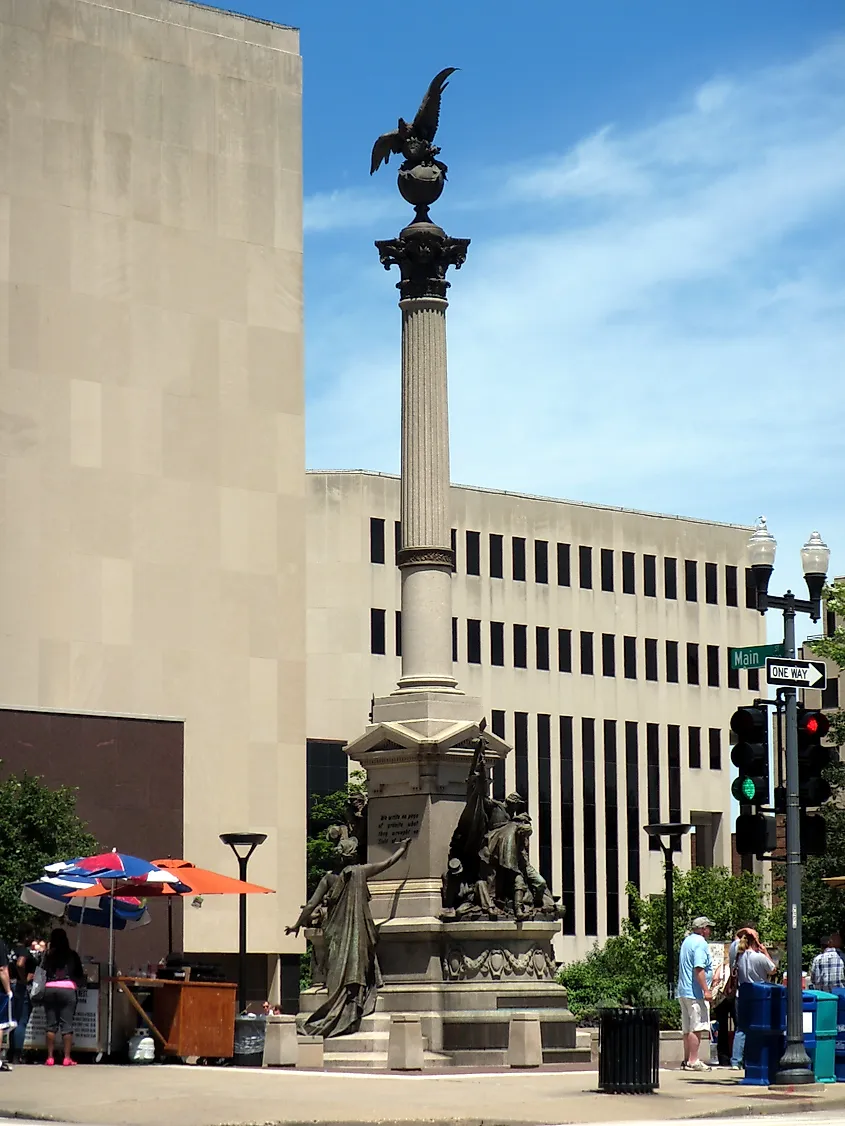
History lovers visiting Peoria will want to stop by the Peoria County Courthouse for a view of the Soldiers and Sailors Monument. Unveiled in 1899, the Monument stands as one of the most impressive tributes in the state to the contributions of Illinois residents to the efforts of the Union. Crafted in Rome from granite by Peoria native Fritz Triebel, this tall pillar is surrounded by bronze figures that honor the defense of the United States. These figures hoist the Union colors and portray a drummer boy cradling a fallen army captain while soldiers surround them. Topped by an eagle with its wings unfurled, this impressive tribute lists the names of many from Peoria who served in defense of the Union.
Soldier’s Monument of Byron
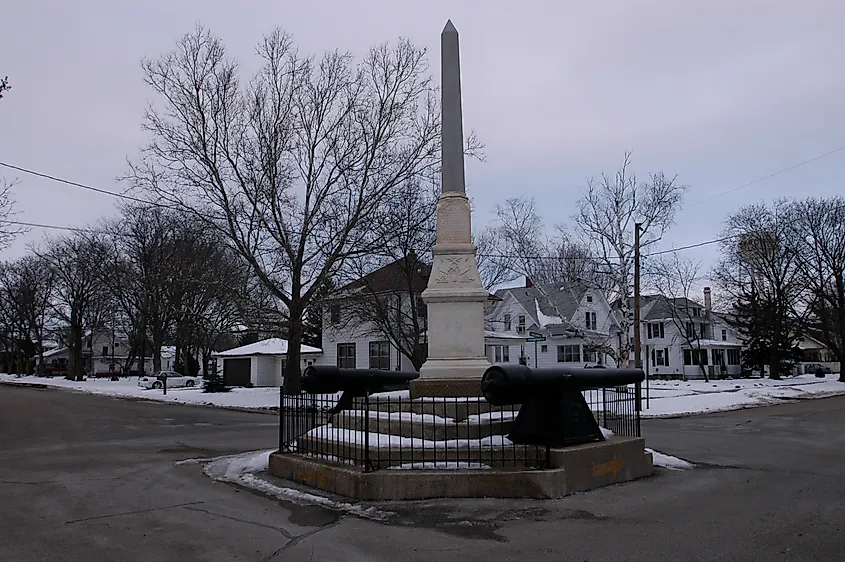
Another destination to visit if you are touring the many monuments that pay tribute to the fallen is the Soldier’s Monument in Byron, IL. Among the smaller tributes to the war to be found around the state, it nevertheless stands in honor of those who served in the war. It has an incredible history, with construction beginning before the end of the war. The statue went on to survive being struck by lightning in 1899 and later being hit by a tornado in 1918. Visitors can appreciate the survival of this incredible memorial before walking just around the corner to find the Byron Museum to learn more about the history of Byron, including its role along the Underground Railroad and during the Civil War.
Soldiers’ Monument of Freeport
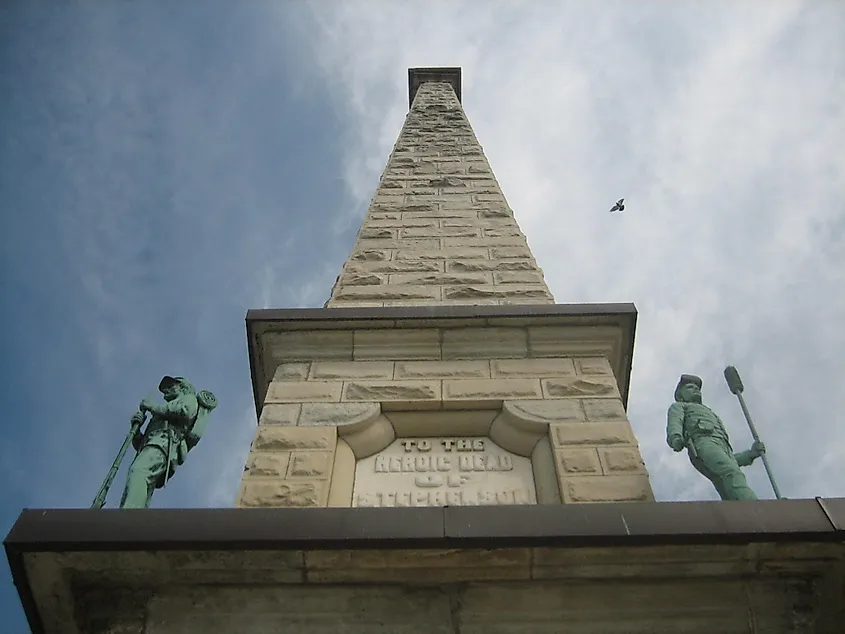
While you are touring the historical sites of Illinois, do not forget to stop by the Soldiers’ Monument in Freeport. First unveiled in 1871, the Soldiers’ Monument is a limestone obelisk decorated by soldiers from the war and topped by a statue of Victory. This figure of Victory is actually a recent addition to the memorial that was only added in 2015 to replace the original statue, which had been struck by lightning and destroyed in 1960. The new statue serves as a point of emphasis, reminding visitors of the necessary sacrifices needed to achieve a hard-fought victory. Visitors can read the names of soldiers from Stephenson County who lost their lives during the war.
DeKalb County Civil War Memorial
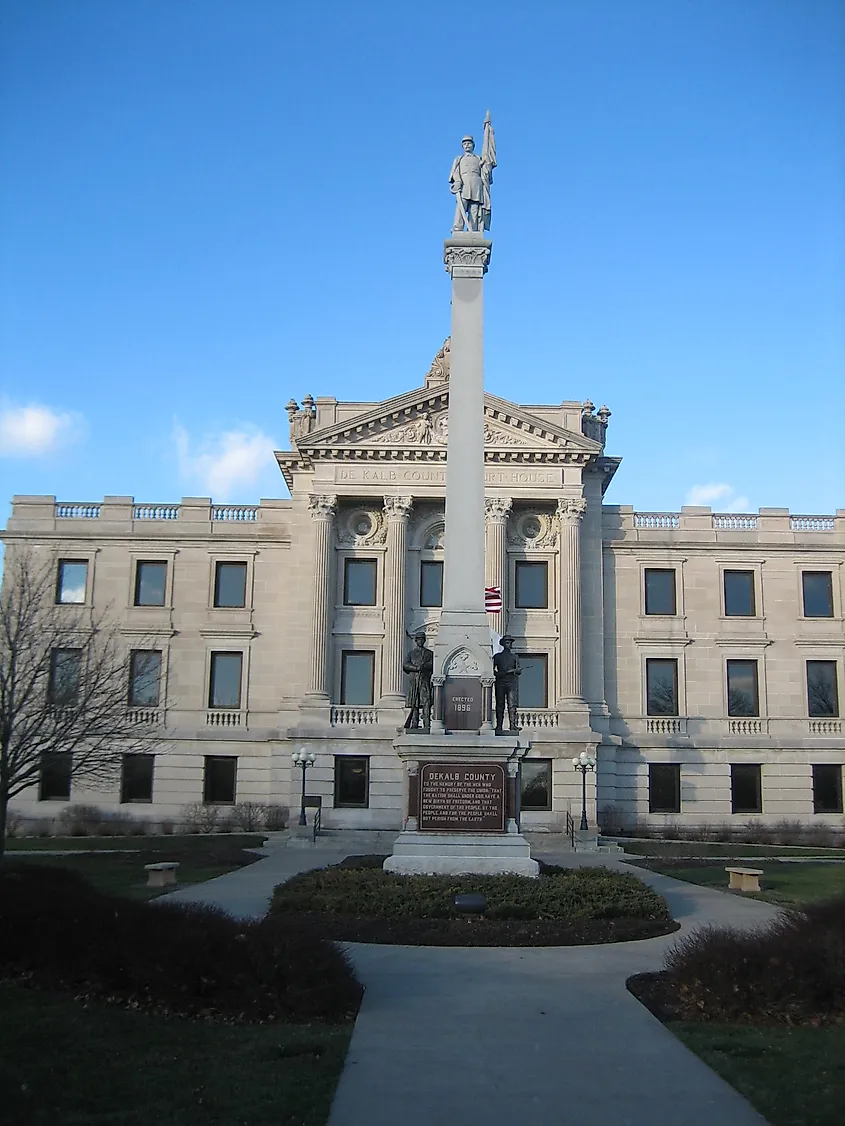
A trip to DeKalb County and the city of Sycamore allows for a view of the DeKalb County Civil War Memorial. A tribute to those who fought for the Union during the war, the DeKalb Memorial sits in front of the DeKalb County Courthouse. First erected in 1896, it sits in a small park and contains many plaques memorializing the events of the Civil War. A few of the plaques are tributes to locations where the war was fought, while others celebrate what was achieved thanks to the efforts of people such as those from DeKalb County.
Soldier's Monument of Oregon
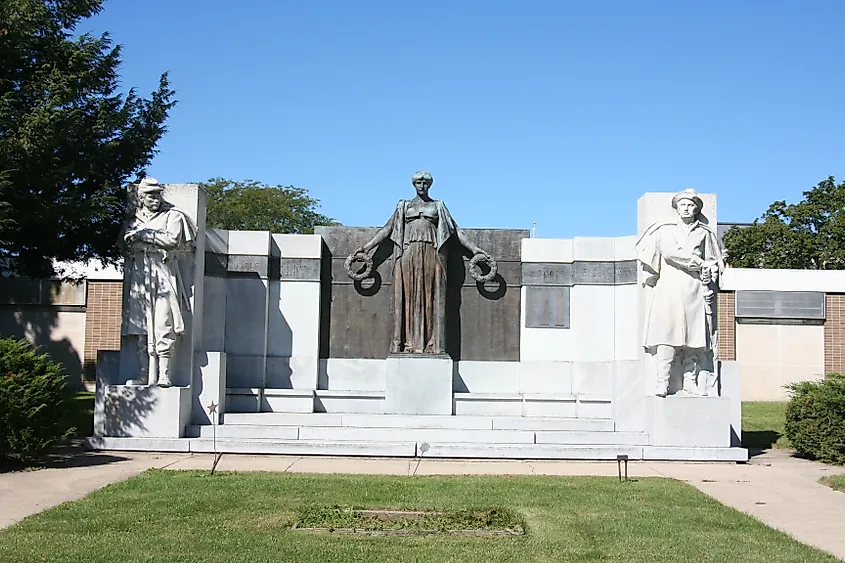
Many of the monuments erected throughout Illinois are tributes to the soldiers from a specific county who gave their lives during the Civil War. The Soldier's Monument of Oregon, IL, is no different and acts as a tribute to those from Ogle County who served. First sculpted by Lorado Taft and dedicated in 1916, the sculpture is today located in the Oregon Commercial Historic District. This monument features three statues, two of marble and one of bronze, that honor the veterans of the war. Nearby, visitors can also see two Civil War cannons that act as memorials. This group of Civil War memorials is located steps away from the courthouse on the eastern side of the courthouse lawn.
The Lincoln Home
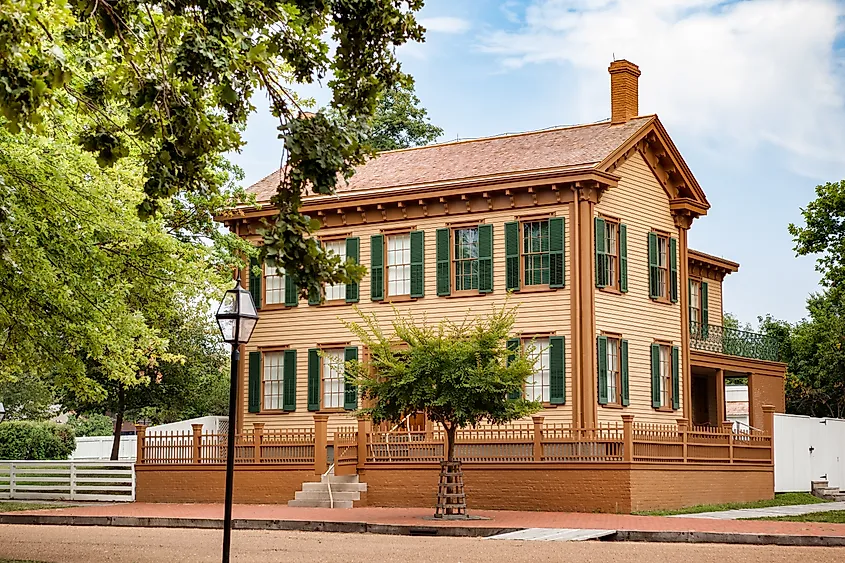
If you are hoping to dive deeper into the legacy of the man who led the nation through the tumultuous period of the Civil War, then you may want to consider a day trip to the Lincoln Home National Historic Site. Located in Springfield, IL, the Lincoln Home is an amazing window into the country’s history. The home retains much of its original foundation and walls, so a visit is much like traveling into the past to see how homes were constructed at the time. Accessible by ticket entry, you can visit the home as well as learn more about the area’s past through a visit to the visitor center. There are also various exhibits throughout the park that show what life was like during this period, including the Jameson Jenkins lot, a stopping point along the Underground Railroad that ferried enslaved people to freedom.
In Service To Freedom
The Civil War was a dark time in the nation’s history, and Illinois was consumed by it. Tributes in small towns such as Summerville and large dedications like the many statues of the Oak Hills cemetery serve as a reminder of all who were lost during that time. However, these reminders also set a positive example for the future and remind visitors that through great sacrifice, great things can be accomplished.
